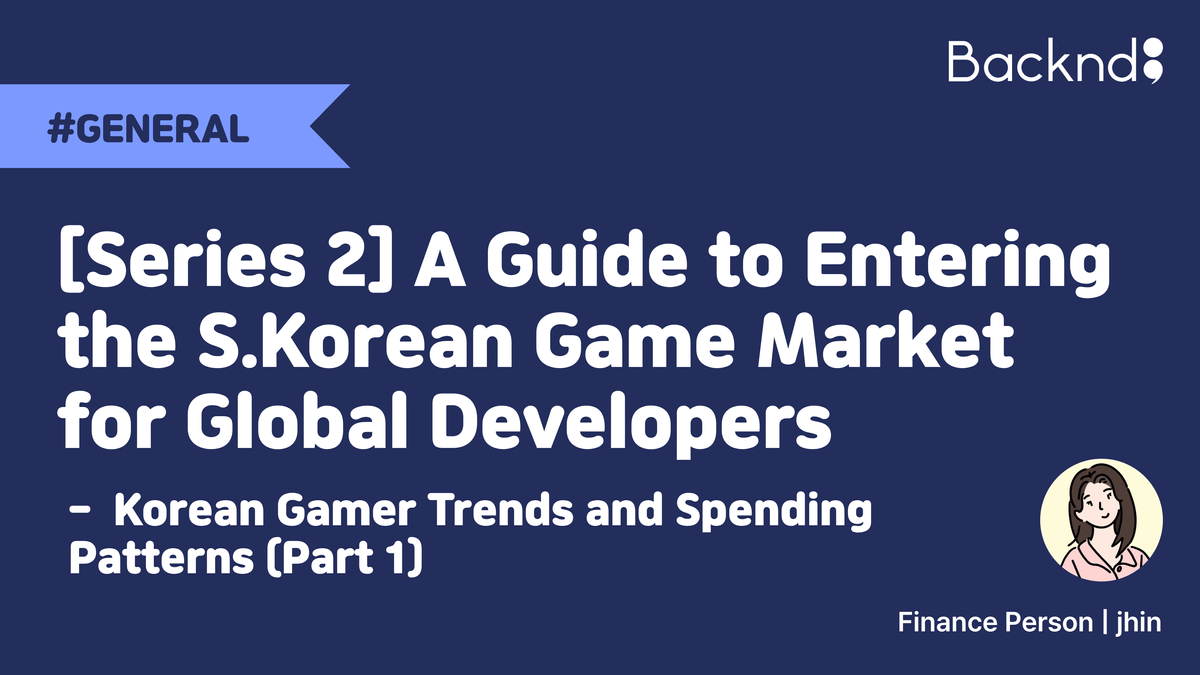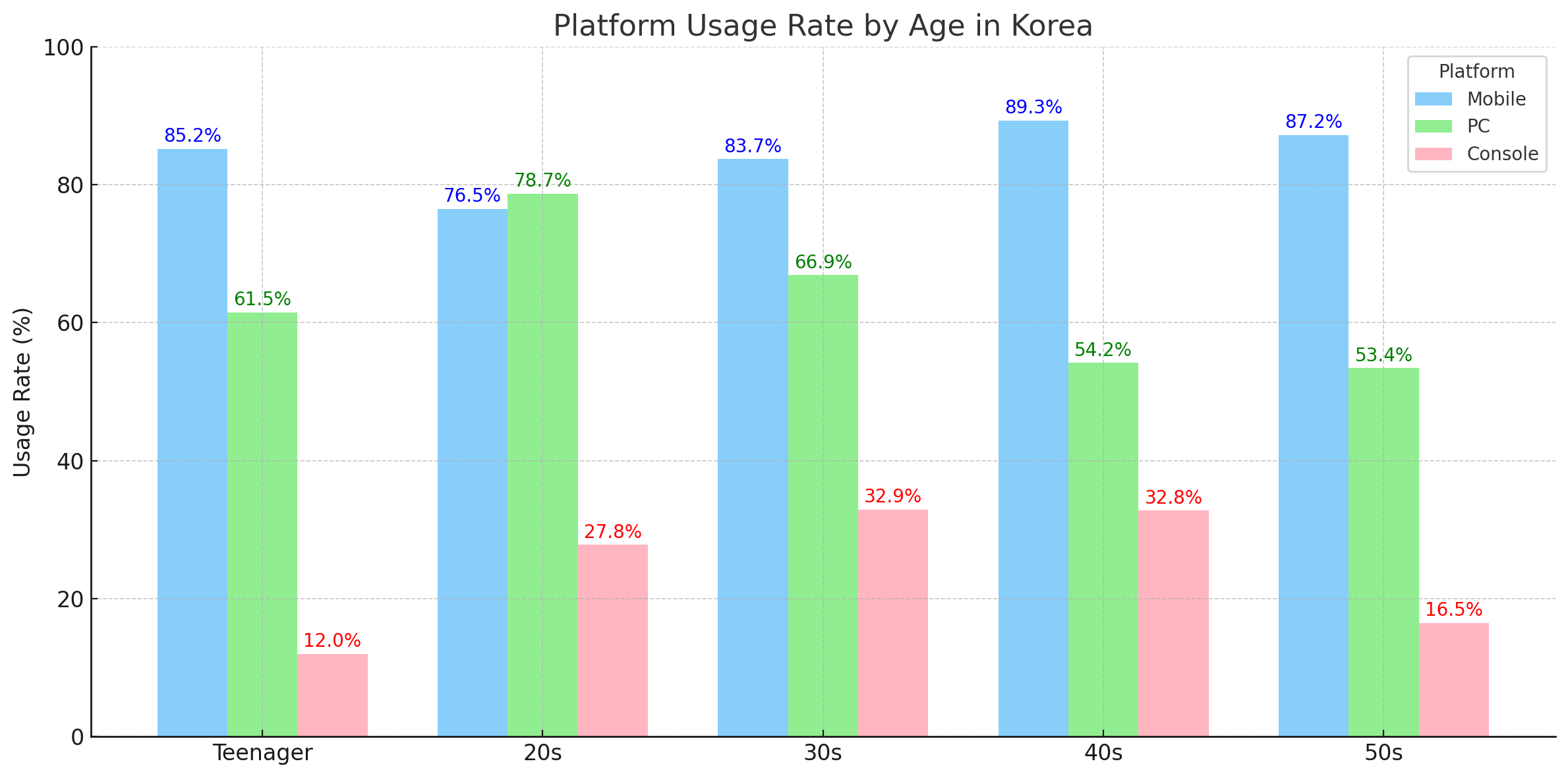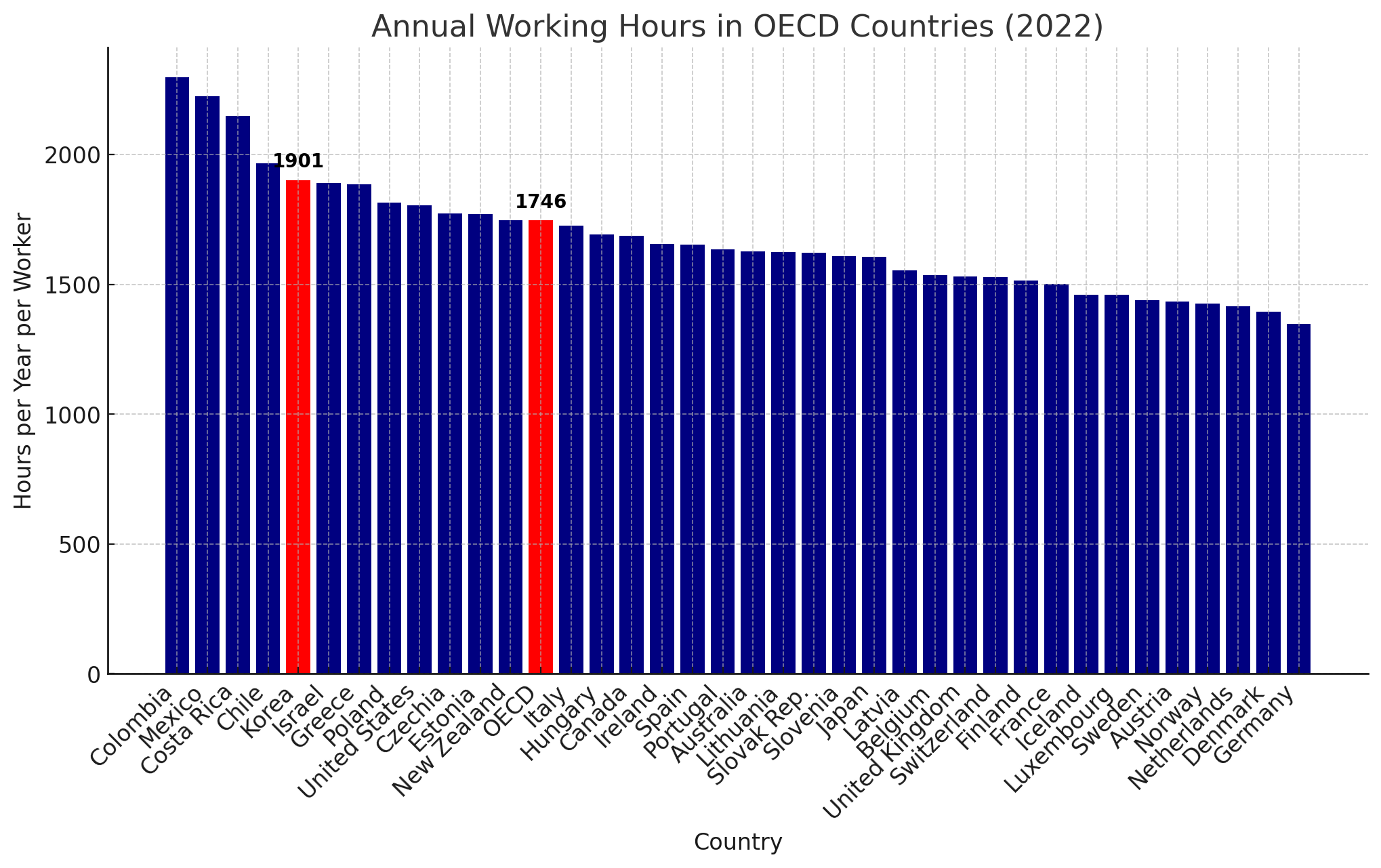A Guide to Entering the South Korean Game Market for Global Developers [Series 2] - Korean Gamer Trends and Spending Patterns (Part 2)
![A Guide to Entering the South Korean Game Market for Global Developers [Series 2] - Korean Gamer Trends and Spending Patterns (Part 2)](/content/images/size/w1200/2025/02/--6.png)
Written by Finance Person jhin, 11 February 2025
⏰ Previously,
we explored ‘Platform Usage Rates by Gender in the Korean Gaming Market’. If you haven’t read it yet, I highly recommend checking it out first—this will make today’s topic even more engaging and easier to understand!
Here’s the link. 👇

Today, we’ll analyze age-based platform preferences and the reasons behind them.
Platform Usage by Age in the Korean Gaming Market
The graph below illustrates platform preferences among Korean gamers by age group.
Key Takeaways 🔍
Mobile games are widely played across all age groups. PC gaming is most popular among gamers in their 20s but declines with age. Console gaming, while less preferred overall, is most actively played by gamers in their 30s and 40s.

These differences in platform usage are not just a matter of personal preference—they reflect Korea’s socio-cultural environment and the gaming experiences of each generation. Let’s explore why these patterns emerge for each platform.
(1) Mobile Gaming: The Power of Accessibility
As of 2024, 95.3% of South Koreans own a smartphone. Smartphones have become an essential part of daily life, used for calls, messages, social media, and photography—practically everyone owns one. This widespread smartphone adoption has made mobile gaming the most easily accessible platform.
Unlike other gaming platforms, mobile games require no additional equipment purchases, making them uniquely accessible to all demographics.
A survey on why players choose a specific platform revealed:
- “To enjoy my free time” ranked 1st (53.5%).
- “play without restrictions on time or place” ranked 2nd (16.6%).
This second response is particularly noteworthy, as it highlights a major competitive advantage that only mobile gaming can offer—convenience and portability than PC or Console.
Additionally, mobile games are often designed with intuitive touch controls, making them easy to play for people of all ages. These factors contribute to mobile gaming’s status as the most widely loved platform in Korea.
(2) Generation2030 and Their Teenage PC Gaming Legacy
To understand why gamers in their 20s and 30s continue to favor PC gaming, we need to look at the evolution of Korea’s game industry.
In 1998, the release of StarCraft shook the Korean gaming scene. Despite the economic downturn caused by the IMF financial crisis in Korea, the game gained explosive popularity among university students and teenagers, transforming gaming from a simple hobby into a cultural phenomenon.
The success of StarCraft led to the rise of esports and reshaped the perception of gaming in Korea. This period also marked the beginning of Korea’s unique 'PC café' culture.
As high-speed internet penetration increased—from 49.8% in 2000 to 80.6% in 2009—online gaming became mainstream. MMORPGs like The Kingdom of the Winds by Nexon and Lineage by NCsoft flourished, reinforcing a gaming culture focused on character progression and long play sessions. The PC café culture, where gamers spent hours playing in social settings, further solidified PC gaming as a core part of the 2030 generation’s experience. The culture of playing games for extended hours in PC cafés also became more widespread during this period, further solidifying PC gaming as a familiar and integral experience for the 20s and 30s generation.
The online gaming market, led by MMORPGs, experienced an average annual growth rate of 31.6% from 2000 to 2010, playing a crucial role in establishing South Korea as a global gaming powerhouse.
As a result, the 20s and 30s generation, who grew up during the golden era of PC gaming, naturally engage with PC games more than other age groups.
However, why does PC gaming usage drop significantly in the 30s compared to the 20s? This decline is not just a matter of changing preferences; rather, it is likely influenced by a combination of digital adaptation from a young age and the structural realities of Korean society.
For those in their 30s, increased work responsibilities and social obligations significantly reduce the time available for PC gaming compared to their 20s. The chart below illustrates the annual working hours of OECD countries as of 2022.

Korean workers are known for having some of the longest working hours globally. As of 2022, the average annual working hours for South Korean employees reached 1,901 hours, which is 155 hours more than the OECD average of 1,746 hours, placing Korea among the top in working hours. On top of this, factors such as marriage, parenting, and social obligations further reduce personal free time.
In contrast, those in their 20s are in a phase where they balance academics and job preparation. Even after entering the workforce, many in their early careers experience relatively lighter workloads, allowing them to continue enjoying PC games. Additionally, university students in Korea often face less academic pressure compared to their high school years, and even those who start working in their late 20s generally have a more flexible lifestyle.
Thus, the primary reason PC gaming usage declines in the 30s compared to the 20s is not merely a shift in preference but rather a result of decreased available f time. With increasingly busy schedules, many in their 30s gravitate toward more accessible and convenient forms of entertainment, such as mobile gaming or other leisure activities, rather than PC games, which require longer sessions and deeper engagement.
This demonstrates that PC gaming patterns are not simply dictated by age-based preferences but are deeply tied to the evolving lifestyle of each generation. 🚀🎮
(3) Why Is Console Gaming So Unpopular in Korea?
Unlike major gaming markets such as North America, Europe, and Japan, Korean gamers across all age groups show relatively low engagement with console gaming. So, why hasn't console gaming taken root in Korea?
There are various analyses on this topic, but the most compelling explanations consider Korea's unique socio-cultural factors.
While not from an official research institution, there is an insightful article that explores this issue from multiple perspectives. It effectively explains cultural aspects that only Koreans might fully understand. Below, I’ve summarized some of the key points that particularly resonate.
Original Source: Hong Sung-gap, "Why Is the Korean Console Market So Small? - Reflections on Korea’s Console Gaming Scene" (https://www.gamegeneration.or.kr/article/52815eb2-89d8-4a73-b81b-cdf3000a1c01)
[Economic Barriers and Historical Context]
One of the biggest reasons console gaming failed to become mainstream in Korea is the high price of early gaming consoles and the country’s economic conditions at the time. During the 1970s and 1980s, the price of a gaming console was equivalent to approximately 28–43% of an average worker’s monthly salary. For many households, this made consoles a luxury rather than an accessible entertainment option.
Additionally, historical tensions between Korea and Japan negatively impacted the growth of the Korean console market. In the 1980s and 1990s, strong anti-Japanese sentiment was prevalent in Korean society, and official imports of Japanese products were restricted by government policies. As a result, Japanese consoles from companies like Nintendo and Sega struggled to enter the Korean market officially, preventing the development of a strong domestic console gaming culture.
By the time restrictions eased, arcade gaming and PC gaming had already taken root and dominated the Korean market, leaving little room for consoles to gain widespread popularity.
[PC’s Versatility and Practicality]
Unlike gaming consoles, PCs served multiple functions beyond gaming, including work, education, and internet access. At the time, many Korean households viewed PCs as 'a tool for preparing for the future,' making them a more justifiable purchase. Additionally, their potential for educational use appealed to parents—'the real decision-makers' when it came to household spending.
In contrast, consoles were primarily for gaming and lacked additional functionalities, making them a lower priority for families compared to PCs.
As a result, even for gaming, PCs were seen as a more practical and economical choice, naturally limiting the widespread adoption of console gaming in Korea.
[The Living Room Hierarchy]
Unlike today, where personal screens are common, console gaming traditionally required connecting to a TV in the living room. However, in Korean households at the time, TVs were considered a shared family resource, with parents largely controlling their use. This meant that children often had limited access to the TV for gaming.
In contrast, PCs could be set up in personal rooms, giving children more freedom to play without parental restrictions. This spatial advantage significantly contributed to the spread of PC gaming over consoles. (Of course, there were exceptions! Some, like myself, had a family PC in the living room. I used to get scolded for gaming too much, so I would sneak back to the PC late at night while my parents were asleep. 😜)
This cultural dynamic played a crucial role in steering Korea’s gaming industry in a different direction from Western markets, where consoles became a staple of family entertainment.
[Social and Cultural Factors: The Lack of Offline Social Gaming Experience]
In North America or Europe, console gaming has traditionally been a central part of offline social experiences, played together with family or friends. However, in Korea, gaming culture evolved differently. Instead of developing a home-based console gaming tradition, Korea transitioned directly from arcade gaming to PC cafés and online multiplayer gaming, bypassing the era of family-oriented console gaming in the living room.
As a result, console gaming in Korea was primarily played alone in personal spaces, while gaming culture as a whole became more centered around online social interactions rather than in-person multiplayer experiences. This shift weakened the offline social aspect of console gaming, which in turn contributed to console gaming being perceived by some as a niche activity, even associated with the stereotype of a "hikikomori" game (socially withdrawn, Japanese Term) among certain demographics.
Ultimately, this played a significant role in why PC gaming has maintained a far stronger presence than console gaming in Korea.


Conclusion
The Dominance of Mobile Gaming Among Teenagers
With simple controls and high accessibility, mobile games are the preferred choice for teenagers, who often have limited free time due to academic commitments. Mobile gaming allows them to engage in short yet immersive gaming sessions, making it the most convenient entertainment option.
As a result, this generation has grown up in a mobile-first gaming environment, shaping their gaming consumption patterns toward mobile-optimized experiences.
For targeting teenagers and casual light gamers, ad-based monetization models (e.g., rewarded ads, banner ads) or low-cost season pass models may be more effective than traditional microtransactions.
Teenagers often play games as a social activity to connect with friends. Incorporating social features such as friend invite rewards and integration with platforms like Facebook or LINE can enhance engagement.
PC Gaming’s Continued Popularity Among the 20s
Gamers in their 20s experienced the golden age of Korean PC gaming firsthand and were heavily influenced by PC café culture during its peak.
This age group typically has more leisure time, maintains a strong preference for e-sports and MMORPGs, and often views gaming not just as entertainment but also as a form of competition and community engagement.
As a result, PC gaming remains the dominant platform for this age group.
Gaming Habits in the 30s: A Mix of PC and Mobile
Those in their 30s grew up during the transition period between PC and console gaming, making them familiar with a variety of platforms. However, due to Korea’s historically PC-centric gaming culture, they tend to be most comfortable with PC gaming.
That said, as work, family, and social responsibilities increase, many in this age group shift toward mobile gaming, which allows for shorter, more flexible play sessions.
Thus, while PC gaming remains a core preference, the adoption of mobile gaming increases significantly in this demographic.
The Rise of Mobile Gaming Among the 40+ Generation
Gamers in their 40s and 50s have the highest mobile gaming engagement, largely due to the fact that smartphones have become an essential part of everyday life.
Since this generation had limited exposure to PC and console gaming during their youth, they tend to favor mobile games due to their accessibility and ease of use.
One reason monetization models like in-app purchases and ad-based revenue thrive in mobile gaming is that 40-50-year-olds have strong purchasing power, making them a key spending demographic in the mobile gaming market.
40-50's players tend to prefer monetization models that provide clear and guaranteed value rather than chance-based gacha mechanics.
Battle passes, progression-based monetization (e.g., guaranteed equipment upgrades), and VIP membership systems can be effective for maximizing engagement and revenue in this demographic.
To Be Continued…
In this article, we explored the game trends and spending patterns of Korean gamers across different age groups.
As always, it's important to note that while this analysis is based on statistical data, subjective interpretations are inevitably included. I encourage you to consider multiple perspectives when assessing the Korean gaming market. 😊 This topic was quite extensive, which is why I divided it into two parts. Today, we wrap up here.
The next article will cover a more complex but essential topic—Korea’s game industry laws and regulations.
Compared to other countries, Korea has stricter gaming regulations, and failing to fully understand them can create major challenges when operating a game in this market. Rather than focusing on insights, the next piece might be prioritize "delivering information" to help you navigate these legal aspects.
Thank you for reading, and I’ll see you in the next article! 🚀

© 2025 AFI, INC. All Rights Reserved. All Pictures cannot be copied without permission.


![[External Essay] Gamescom 2025 Interactions](/content/images/size/w600/2025/09/------1.png)


